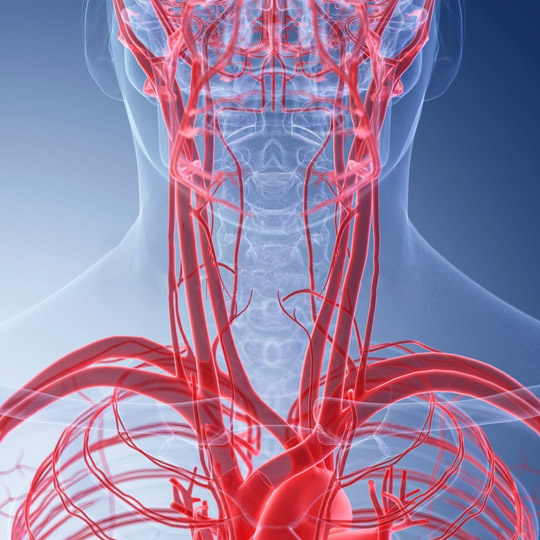Conditions & Diseases
Carotid Artery Disease
The carotid arteries are the large arteries on each side of the neck that supply blood to the head and brain. Carotid artery disease involves a buildup of fatty deposits or “plaque” that can narrow and block blood flow through the arteries, possibly leading to a stroke. Nearly 700,000 people in the United States experience a stroke each year; 200,000 of them are repeat strokes.
Signs & symptoms
Carotid artery disease may never show signs until a stroke has occurred. Call 911 immediately if you experience any signs or symptoms of a stroke, which may include:
- Partial loss of vision in one eye
- Weakness, tingling or numbness in one arm and/or leg
- Temporary loss of control of movement in one arm and/or leg
- Inability to pronounce words or speak clearly
- Unsteadiness, vertigo, double vision or sudden falls
- Difficulty swallowing
- Temporary memory loss
- Vertigo
- Loss of balance
- Personality or mood changes
- Drowsiness or loss of consciousness
- Uncontrollable eye movements or eye drooping
Risk factors
- High blood pressure
- High cholesterol
- Smoking
- Diabetes
- Obesity
- Sleep apnea
- Family history
- Age
Diagnosis
Diagnosis of carotid artery disease typically includes a medical evaluation and review of family history and risk factors. Testing may include:
- Ultrasound
- CT or MRI
- CT angiography or MR angiography
Treatment
Minimally-invasive treatment options include:
- Clot-busting medications delivered through catheters to the affected area
- The insertion of a small wire tube (stent) to help clear and widen the affected arteries
- Surgical removal of the plaque blocking the arteries


